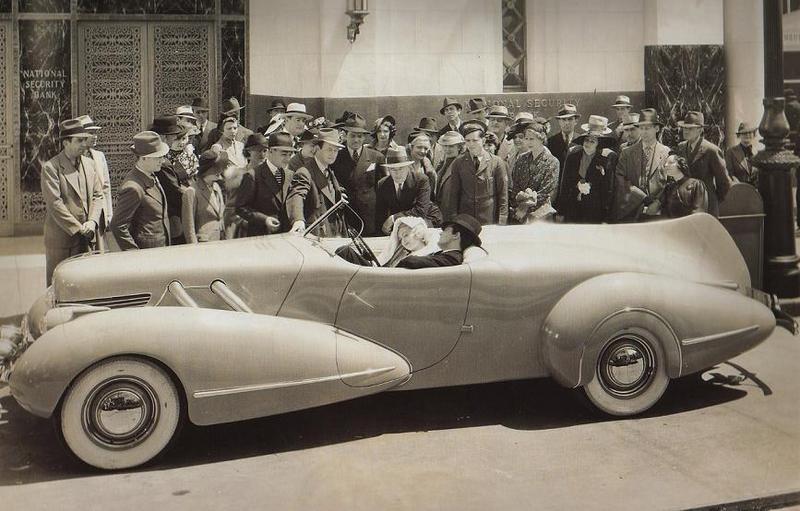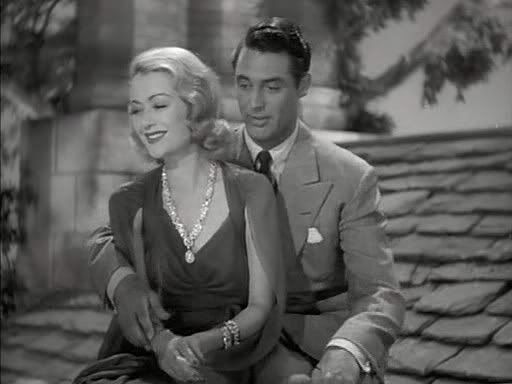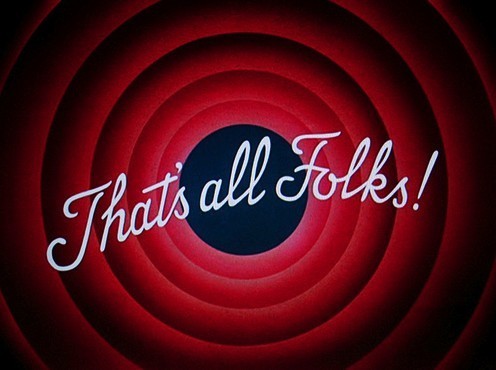McKenna Ink Thesis Editing Service
To add your comments,
click here.
Googling the ghosts
of Montparnasse cemetery
By Hugh Schofield BBC News, Paris 
Montparnasse inhabitants can be 'reawakened' with a little help from a smartphone
Paris is well-known for its cemeteries, the most famous being Pere Lachaise, where tourists seek out the tomb of Oscar Wilde. But I live next to another great 19th Century cemetery in Montparnasse - and when I go there I always take my phone. It is funny how we love a graveyard. You would think we would find contemplation of all that decomposition and mortality to be off-putting, but we do not. Or at least I do not.
Over the last 10 years I have become an aficionado of the pathways and sculptures and chapels and memorials of my local, Montparnasse cemetery. By now I know all the famous graves - Serge Gainsbourg, the singer and poet, his slab covered with flowers and metro tickets left by fans in reference to one of his best-known songs. Famous "residents" include Charles Baudelaire and Guy de Maupassant, the photographer Man Ray and the chess grandmaster Alekhine, Samuel Beckett, Susan Sontag and Jean Seberg.
Tombs re-used
Near the northern gate, the shared tomb of Jean-Paul Sartre and Simone de Beauvoir, with always a piece or two of folded paper. Words of devotion from some earnest admirer, often in Japanese for some reason.
It is very regimented, in a way that official things so often are in France. The ground is divided into 30 "divisions" and there are uniformed attendants who blow whistles and hustle everyone out at closing time.
Lines of watering cans attest to the fact that this is very much a (excuse the pun) "living" cemetery, with 1,000 new burials every year, as old abandoned tombs are emptied and re-used. So much for the pious hope, everywhere engraved - "plot granted in perpetuity." Anyway, it is a lovely restful place, all the more welcome for being at the heart of a busy metropolis. And now I have discovered a new reason to visit - the smartphone.
By which I mean, the possibility offered by any internet-capable hand-held device to serve up the most extraordinary array of instant, fascinating information about people - dead people - who we would otherwise totally ignore.
Ghosts of the past
Thanks to technology, these obscure ghosts are getting a new chance at "perpetuity".
The other day I passed a tomb graced with a simple French tricolour. A soldier, dead in 1914, name of Marie-Joseph Bridoux.

General Bridoux's grave reveals a unique family story
Never heard of him? No-one has. But it turns out, thanks to a quick internet search, that he was the first French general to die fighting the Germans in World War I, just a few weeks after its outbreak.Not only that, we learn that his son Eugene was later war minister in the pro-German Vichy government in World War II, and that his grandson, also called Eugene, was a Sturmbannfuhrer in the French division of the Waffen-SS.
There, in a single family, is a glimpse of how what began as patriotism was transformed between the wars into demoralisation and betrayal.
Stumbling through a forgotten corner, I find a small blackened tombstone bearing the family name of France's famous ex-prime minister Dominique de Villepin” and on the very same tombstone the name of Britain's famous ex-prime minister Blair. It turns out, I discover on a genealogy website, that the de Villepin family, vaguely aristocratic, is descended in one branch from the Scottish Barons Blair of Balthayock in Perthshire. Any relation?
A short walk away, coincidentally, I come across the tomb of the lady they used to call Madame la Marechale. Nothing to mark it out, but this is the wife of the Vichy leader Philippe Petain. He was a notorious philanderer as a younger man, and she, also quite sexually forward, went by the glorious name of Nini Hardon. She was loyal to him to the end. Click on a link to the French national archives and you can see footage of her, a rather severe lady, tweedy but still busty, visiting her disgraced husband in prison on the Ile d'Yeu. She died in 1962.
'The Kiss'
Over here, a stylised sculpture, a cube of stone fashioned to represent two people embracing. Below it a tombstone and hidden in ivy an old, old photograph of a young woman. The writing on the stone is Cyrillic and almost worn away, but a quick search tells the story.

Here is a man called Charles Cros, long-forgotten, but he once invented something called the paleophone. It was exactly the same as the gramophone, but the year was 1877 and Thomas Edison had just taken out the patent.
And over here a newish tomb, someone called Maurice Kriegel-Valrimont. He was one of the French Resistance men who took the surrender of the German army in Paris in August 1944. Come to think of it, I interviewed him on the 60th anniversary and wrote it up for the BBC News website. Ah yes, here it is on my phone. Marvellous seeing your old stuff again.
1937
Constance Bennett and Cary Grant play Marion and George Kerby, a wealthy, freewheeling young married couple whose uninhibited lifestyle is the talk of the town. After a particularly bibulous evening on the town, the Kerbys race homeward in their gleaming new roadster. George fails to negotiate a curve, and the car plows into a tree, killing both its occupants. Seconds later, the ghosts of George and Marion emerge from the wreckage, behaving as frivolously as if nothing had happened. Image Via Legendary Stars & Classic CarsUpon realizing they're dead, the Kerbys also realize that they haven't been immediately snatched up into Heaven. Determining that they're required to perform one good deed before being allowed past the Pearly Gates, George and Marion set about to "liberate" stuffy, sedate, henpecked banker Cosmo Topper (Roland Young).
Image Via Legendary Stars & Classic CarsUpon realizing they're dead, the Kerbys also realize that they haven't been immediately snatched up into Heaven. Determining that they're required to perform one good deed before being allowed past the Pearly Gates, George and Marion set about to "liberate" stuffy, sedate, henpecked banker Cosmo Topper (Roland Young).
At first resistant to the charms of his invisible benefactors, Topper begins to loosen up and truly enjoy life for the first time. Naturally, this doesn't sit well with Topper's supercilious wife (Billie Burke) nor his long-suffering butler (Alan Mobray), especially during a climactic free-for-all at a vacation resort.
Though special effects abound in Topper, most of the humor derives from the embarrassed reactions of Roland Young as he tries to fend off the flirtatious advances of the ghostly Marion and the benignly strongman tactics of the spectral George. Adding to the fun are Eugene Pallette as a flustered house detective and Arthur Lake as a pratfalling bellboy. Image Via Cinema 365

The musical score by longtime Hal Roach composer Marvin Hatley is perfectly attuned to the zany goings-on (including snatches of background music from Roach's earlier Laurel and Hardy comedies), while Hoagy Carmichael appears briefly on screen to introduce the film's signature tune, "Old Man Moon." Topper proved successful enough to warrant two sequels, as well as a popular TV series of the early 1950s.
~ Hal Erickson, Rovi
1937 Buick Century Bohman & Schwartz Image Via IMCDB
Now comes Hal Roach, heretofore identified with obvious action comedy and, with the assistance of Norman McLeod, as director, he has produced as weird and baffling a tale of spiritualism as the screen ever has seen. It is entitled 'Topper,' from a story by the late Thorne Smith. It is carefully made, excellently photographed, and adroitly employs mechanical illusions of cinematic composition and trick sound effects.
How substantial the fan support will be in terms of box office dollars is difficult to anticipate. None of the other films of similar theme aroused more than mild enthusiasm among a small group who patronize the arty theatres and talk about pictures in terms of art expression. The rank and file of theatergoers will experience difficulty in following strange and surprising twists of the story, and are not likely to distinguish easily the passages of realism from the sequences of unreality.
Story is about the adventures, among living persons, of a young married couple, George and Marion Kerby, who are killed in an automobile smashup as the climax of a wild night of drinking and carousing. Their astral bodies rise from the ruins, and their conversation continues in a casual manner as to their next objective. They agree that until they have done some one a good deed they are likely to remain indefinitely in a state of double exposure. Reviewing the possibilities for charitable action, they decide that their friend, Cosmo Topper, a hen-pecked bank president, who has lived a dull, routine life, shall have the benefit of their assistance.
Same carefree, flippant viewpoint on life which characterized the couple before their death maintains throughout the subsequent series of farcical events. Possessed with unusual power, they are able at will to appear in the flesh, converse and move about among their friends.
Occasionally, they make known their presence by spoken words only. All the comedy and playfulness of their adventures results from these attributes. They engage, both visibly and unseen, in street brawls, as drivers of speeding automobiles, as frightening specters in hotel lobbies and restaurants.
Effort to excuse the story's absurdities on the theory that the intent is farce comedy does not entirely excuse the production from severe rebuke. Fact also that the living dead always are facetious may be shocking to sensibilities. Some of the situations and dialog offend conventional good taste.
Performances, however, are usually good. Cary Grant and Constance Bennett, as the reincarnated Kerbys, do their assignments with great skill. Roland Young carries the brunt of the story and does it well. In the titel role, he is the docile, good citizen until the transformation of his personality changes him into a dashing man about town. Billie Burke plays the less important role of Mrs. Topper with effect. Both Alan Mowbray, as the Toppers' butler, and Eugene Pallette, as a hotel detective, are splendid. Arthur Lake gets a lot of fun from a small role as an elevator boy.
'Topper' will be talked about both in and outside the industry. The skill with which camera and sound effects have been accomplished sets a standard for mechanical excellence. Settings are elaborate. But whether word of mouth advertising will be sufficient to overcome the obstacles which this type of story always combats is questionable. Probably not.

Cosmo Topper is the Kerby's former banker, a frustrated and hen-pecked little man.
The Kerbys try to conserve their eckto-plasm by only being visible when really necessary. This gets Topper into all kinds of trouble. After drinking, Topper is arrested, to his wife's horror. He leaves home and goes to a motel with the lady ghost to drink, dance and have fun. The staff is spying on him, and before long the motel is a shambles, and Topper is on his way home to his reformed wife.
This is a bright and sophisticated comedy, with a dash of Grant's vaudeville talents thrown in. In a scene towards the end, the ghosts are talking on the roof, and Grant's character is walking back and forth across the roof's peak showing off his abilities as a trained acrobat! All in all, a VERY entertaining movie.


'The Kiss'
Over here, a stylised sculpture, a cube of stone fashioned to represent two people embracing. Below it a tombstone and hidden in ivy an old, old photograph of a young woman. The writing on the stone is Cyrillic and almost worn away, but a quick search tells the story.

Brancusi's grave lies some distance from his sculpture
This is the grave of one Tania Rachevskaia, a Russian anarchist who committed suicide for love in 1908. The sculpture is "The Kiss" by her friend the Romanian Constantin Brancusi, himself buried in another division in the cemetery. Apparently, the sculpture is very famous - and, oh yes, only now do I spot the security cameras.Here is a man called Charles Cros, long-forgotten, but he once invented something called the paleophone. It was exactly the same as the gramophone, but the year was 1877 and Thomas Edison had just taken out the patent.
And over here a newish tomb, someone called Maurice Kriegel-Valrimont. He was one of the French Resistance men who took the surrender of the German army in Paris in August 1944. Come to think of it, I interviewed him on the 60th anniversary and wrote it up for the BBC News website. Ah yes, here it is on my phone. Marvellous seeing your old stuff again.
Feature Via The BBC
Topper
1937

Image Via Faster Kitty Kill

Image Via Topper FB
Topper is a comedy telling the story of a stuffy, stuck-in-his-ways man who is haunted by the ghosts of a fun-loving married couple. Madcap couple George and Marion Kerby are killed in an automobile accident. In limbo because they've never done either good or bad deeds, they decide to try a good one now: rehabilitating the lifestyle of their friend, bank president Cosmo Topper.
Lovely, flirtatious Marion takes a keen personal interest in the job. When Topper starts to live it up, it strains relations with his stuffy wife but also with ghostly George. Does Topper survive the wrath of a jealous phantom? Will Mrs. Topper discover a scandalous husband isn't all that bad?
The film was adapted by Eric Hatch, Jack Jevne and Eddie Moran from the novel by Thorne Smith. The MGM production stars Constance Bennett, Cary Grant, Roland Young, and Billie Burke. Topper was a huge hit with film audiences in the summer of 1937 and Cary Grant had a percentage deal on the film. He made quite a bit of money on the successful film.
Topper was followed by the sequels Topper Takes a Trip (1938) and Topper Returns (1941). There was a television series, which premiered in 1953 and ran for two seasons, starring Leo G. Carroll, Robert Sterling and Anne Jeffreys.
In 1973, a television pilot for a proposed new series Topper Returns (1973) was produced, starring Roddy McDowall, Stefanie Powers and John Fink. A TV movie remake, Topper (1979) was also produced starring Kate Jackson, Jack Warden and the Andrew Stevens.
In 1985, Topper was one of the first films to be re-released in color using a controversial process known as film colorization. Currently, a new Topper remake starring Steve Martin is in production.
Text Wikipedia
And now, some background history...
By 1937, producer Hal Roach was hoping to wean himself away from the Laurel & Hardy-Our Gang slapstick on which he had built his studio's reputation by delving into the "screwball comedy" genre. Roach selected the racy Thorne Smith fantasy novel Topper for adaptation, and the result was one of the most endearingly funny films of the decade.
Topper plot synopsis:
 Image Via Legendary Stars & Classic Cars
Image Via Legendary Stars & Classic CarsAt first resistant to the charms of his invisible benefactors, Topper begins to loosen up and truly enjoy life for the first time. Naturally, this doesn't sit well with Topper's supercilious wife (Billie Burke) nor his long-suffering butler (Alan Mobray), especially during a climactic free-for-all at a vacation resort.
Though special effects abound in Topper, most of the humor derives from the embarrassed reactions of Roland Young as he tries to fend off the flirtatious advances of the ghostly Marion and the benignly strongman tactics of the spectral George. Adding to the fun are Eugene Pallette as a flustered house detective and Arthur Lake as a pratfalling bellboy. Image Via Cinema 365

The musical score by longtime Hal Roach composer Marvin Hatley is perfectly attuned to the zany goings-on (including snatches of background music from Roach's earlier Laurel and Hardy comedies), while Hoagy Carmichael appears briefly on screen to introduce the film's signature tune, "Old Man Moon." Topper proved successful enough to warrant two sequels, as well as a popular TV series of the early 1950s.
~ Hal Erickson, Rovi

1937 Buick Century Bohman & Schwartz Image Via IMCDB
VARIETY Film Review
July 14, 1937 - by "Flin"
- submitted by Barry Martin
Technical ease with which the motion pictures can make characters instantaneously appear and disappear from the screen, always has tempted producers and screenwriters to delve, sometimes seriously, sometimes humorously, into stories which invade the field of the spiritualistic and occult. Of such were 'Earthbound,' directed by T. Hays Hunter; 'One Glorious Day,' by James Cruze (both silents), and two recent sound films, Noel Coward in 'The Scoundrel,' by Ben Hecht and Charles MacArthur and Robert Donat in 'The Ghost Goes West,' produced by Alexander Korda.Now comes Hal Roach, heretofore identified with obvious action comedy and, with the assistance of Norman McLeod, as director, he has produced as weird and baffling a tale of spiritualism as the screen ever has seen. It is entitled 'Topper,' from a story by the late Thorne Smith. It is carefully made, excellently photographed, and adroitly employs mechanical illusions of cinematic composition and trick sound effects.
How substantial the fan support will be in terms of box office dollars is difficult to anticipate. None of the other films of similar theme aroused more than mild enthusiasm among a small group who patronize the arty theatres and talk about pictures in terms of art expression. The rank and file of theatergoers will experience difficulty in following strange and surprising twists of the story, and are not likely to distinguish easily the passages of realism from the sequences of unreality.
Story is about the adventures, among living persons, of a young married couple, George and Marion Kerby, who are killed in an automobile smashup as the climax of a wild night of drinking and carousing. Their astral bodies rise from the ruins, and their conversation continues in a casual manner as to their next objective. They agree that until they have done some one a good deed they are likely to remain indefinitely in a state of double exposure. Reviewing the possibilities for charitable action, they decide that their friend, Cosmo Topper, a hen-pecked bank president, who has lived a dull, routine life, shall have the benefit of their assistance.
Same carefree, flippant viewpoint on life which characterized the couple before their death maintains throughout the subsequent series of farcical events. Possessed with unusual power, they are able at will to appear in the flesh, converse and move about among their friends.
Occasionally, they make known their presence by spoken words only. All the comedy and playfulness of their adventures results from these attributes. They engage, both visibly and unseen, in street brawls, as drivers of speeding automobiles, as frightening specters in hotel lobbies and restaurants.
Effort to excuse the story's absurdities on the theory that the intent is farce comedy does not entirely excuse the production from severe rebuke. Fact also that the living dead always are facetious may be shocking to sensibilities. Some of the situations and dialog offend conventional good taste.
Performances, however, are usually good. Cary Grant and Constance Bennett, as the reincarnated Kerbys, do their assignments with great skill. Roland Young carries the brunt of the story and does it well. In the titel role, he is the docile, good citizen until the transformation of his personality changes him into a dashing man about town. Billie Burke plays the less important role of Mrs. Topper with effect. Both Alan Mowbray, as the Toppers' butler, and Eugene Pallette, as a hotel detective, are splendid. Arthur Lake gets a lot of fun from a small role as an elevator boy.
'Topper' will be talked about both in and outside the industry. The skill with which camera and sound effects have been accomplished sets a standard for mechanical excellence. Settings are elaborate. But whether word of mouth advertising will be sufficient to overcome the obstacles which this type of story always combats is questionable. Probably not.

A Modern Review:
- by Jerelyn Stanley
Topper was movie-maker Hal Roach's jump from two-reel comedies to the big-time movies. The special effects are amazing, all being "in-the-camera" techniques, and not the blue-screen techniques used today. Cary Grant and Constance Bennett play George and Marion Kerby, two wealthy, free-wheeling socialites killed in a car accident. They decide that they can't get to heaven unless they do a good deed.Cosmo Topper is the Kerby's former banker, a frustrated and hen-pecked little man.
The Kerbys try to conserve their eckto-plasm by only being visible when really necessary. This gets Topper into all kinds of trouble. After drinking, Topper is arrested, to his wife's horror. He leaves home and goes to a motel with the lady ghost to drink, dance and have fun. The staff is spying on him, and before long the motel is a shambles, and Topper is on his way home to his reformed wife.
This is a bright and sophisticated comedy, with a dash of Grant's vaudeville talents thrown in. In a scene towards the end, the ghosts are talking on the roof, and Grant's character is walking back and forth across the roof's peak showing off his abilities as a trained acrobat! All in all, a VERY entertaining movie.
Text Via CaryGrant.Net
Image Via Photobucket

Now, sit back and enjoy 1937's
"Topper"
To add your comments, click on
links to this post
here or below . It will take you to a stand-alone copy of this page. There, you will find the comments box, so feel free to let 'er rip.







No comments:
Post a Comment